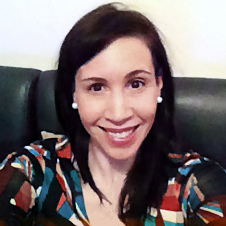ForceBrands recently ran a piece about virtual hiring, which featured some great tips on how to make remote interviews as effective as in-person meetings, but that’s only one challenge companies have had to face in recent weeks. Since the emergence of Coronavirus (COVID-19), the entire hiring process has changed in several ways. Fortunately, many organizations are still filling positions during the crisis. While some companies already had virtual systems in place, others are starting from scratch.
One aspect we found that’s evident across the board is that leaders are rising to the challenge and making the best of these circumstances for both their companies and potential candidates for hire. We spoke with Brian Murphy, Co-Founder of Ranch Rider Spirits Co., as well as Bently Enterprises’ Ingrid Wetzell, Director of Human Resources, and Araceli Ceballos, Human Resources Generalist, for some insights.
“We have been very fortunate because we have done virtual interviewing for the past three years. We have sales and marketing employees, so we are always looking for individuals from all over the country,” explains Wetzell. “We were prepared, and what we have learned is that it’s a learning process. There have been (and continue to be) learning opportunities during this recruitment period.”
“Right now a lot of people may have lost their jobs, or their hours have been reduced, so they are trying to look for their next opportunity,” adds Ceballos. “For us, we’re just trying to keep open communication — sometimes maybe even over-communicating, just to keep them updated.”
She says the team keeps in touch with potential hires via updates on where they are in the hiring process and if they are moving forward with next steps. “We don’t want them to be hanging around wondering what’s going on or if they are still in the pool of candidates,” Ceballos says. “If I was in that situation I would want that open communication, so it’s kind of also putting yourself in their shoes.”
For Murphy, virtual interviewing and hiring is new territory for the Ranch Rider Spirits team. “We didn’t have a process in place, but this was a great opportunity to implement our virtual interview process,” he notes. “We start out with a 30-minute intro call. Prior to the next round, the candidate prepares and distributes a presentation deck and presents virtually over video chat. The drawback would be that you almost always run into technology issues.”
Since no interview is the same, Wetzell says the team at Bently is constantly adjusting and looking for better forums and products. “We use our virtual interview panel to help familiarize junior managers with the interview process because it’s a little easier that way. It has also helped us in regards to timeliness and budgets (due to no in-person meetings or having to fly people in).”
Of course, this new way of hiring doesn’t come without some challenges. “First of all, be very clear about what technology platform you’re using to conduct interviews and make sure the candidates have the appropriate software installed beforehand,” says Murphy. “Second, don’t get frustrated when the inevitable technology problem arises.”
At Bently, the human resources team typically sets up interviews and connects with their IT team to schedule the meetings, which originally didn’t always go as planned. “We had some issues with our system. We actually used GoToMeeting for a long time, but we thought that wasn’t as user-friendly,” says Ceballos. “That’s when we moved to BlueJeans, the system we’re using now. We are actually looking at Zoom, too, so we’re always reevaluating the system that we use just to make sure it is a good fit on the candidate’s side but also on the business side.”
Once a company chooses an ideal platform for connecting with candidates, Wetzell suggests several things to keep in mind. “Do a lot of planning and test things out before going live. Use mock-up interviews with your people and make sure that you have the workflow mapped out. For those individuals who have not done a virtual interview, or interviewing at all, conduct some training and rehearsal,” she says. “Throughout the process, one thing you need to think about is that not only are we interviewing the candidate, but the candidate is also interviewing us, so we want it to be a positive experience for both sides.”
Along with those challenges, there have also been surprising benefits. “We’ve found that we can screen applicants a lot more efficiently if it’s all virtual. We’ve also been surprised how close to a real meeting video chats can be,” says Murphy, “so we might start using video chats more.”
For Wetzell, having a great IT team has made all of the difference within the company’s hiring process. “Our management is very eclectic and innovative so we have turned an awkward, challenging situation into something that is now part of our day-to-day operations,” she explains. “That aspect was surprising because you know that a personal touch is very important. Bringing it into that virtual world with technology, and still being able to create an interpersonal relationship with the candidate, is very important too. It has been challenging to make this better, but at the same time, the results have been very good because we have onboarded quite a few individuals through this virtual process. Throughout, it’s important to set the tone for them to feel at ease. Sometimes it’s easier with some candidates than others, and we remain cognizant of that because we know this is a difficult time.”
Interested in working in CPG? Get in touch with ForceBrands or explore our job board.







